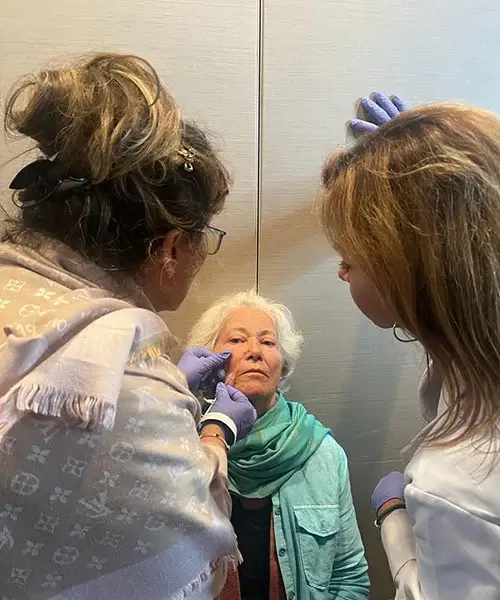Understanding Prejowl Sulcus: What It Is and How to Treat It
By Dr. Stephen Cosentino
PRESIDENT OF EMPIRE MEDICAL TRAINING
The prejowl sulcus (also known as the pre-jowl sulcus) is an overlooked part of the jowl region that has an outsize effect on the overall appearance of the face.
Like the rest of the face, the prejowl sulcus changes with age. It plays an important role in “jowling,” or the formation of pronounced jowls under the jawline. Fortunately, it’s straightforward to treat with minimally invasive or noninvasive methods like dermal fillers and radiofrequency (RF) microneedling.
Here’s what you need to know to make an informed decision about prejowl sulcus treatment.
What Is the Prejowl Sulcus?
The prejowl sulcus is a facial structure between the chin and the jowl. It’s a shallow divot that marks the boundary between the tight skin of the chin itself and the softer, more pliable skin of the jowl. It’s easiest to notice along and just above the jawline.
How the Prejowl Sulcus Changes With Age
In younger patients and those with little to no excess skin in the chin and jowl, the prejowl sulcus doesn’t stand out. However, with age, the surrounding skin can lose volume and sag, making the divot more pronounced.
In patients with more pronounced prejowl sulcus, the divot may extend upward along the back of the chin toward the corner of the mouth. It may join the larger triangular divot there to create an obvious (and potentially unsightly) region of low skin volume separating the chin and the jowl. As the jowl sags, the entire region suffers aesthetically — making you look much older than you really feel.
How to Treat the Prejowl Sulcus
Like other facial structures that can lose volume over time, the prejowl sulcus responds well to dermal filler treatment.
Dermal Filler “Plus”
Many providers combine dermal filler injections with other cosmetic techniques, such as radiofrequency microneedling and laser therapy. The prejowl sulcus and surrounding areas often develop fine lines and wrinkles with age, so these more superficial techniques temporarily smooth the skin while the dermal fillers work their volume-enhancing magic.
Some providers treat the prejowl sulcus region with Botox® or other botulinum toxin formulations as well. However, because the prejowl sulcus is a more superficial structure without associated large muscle groups, Botox’s direct impact is limited. But Botox may help treat cosmetic complaints affecting nearby structures, like chin dimpling and square jaw.
How Long Treatment Lasts
Dermal fillers offer temporary volume loss treatment. They can’t permanently reverse the effects of aging on the skin.
How long results last depends on the type of dermal filler used. Hyaluronic acid formulations (Restylane®, Juvederm®) can produce noticeable results for 9 to 12 months. Radiesse, which uses a different active ingredient, can last for up to 2 years.
Potential Risks and Side Effects
Dermal filler treatment has a good safety profile, but side effects and more serious complications can occur.
Though rare, the most serious risks include blood clotting (due to injection into a blood vessel) and allergic reaction. Small lumps and bumps called granulomas may form; these are harmless but unsightly. They can be reversed with an antidote called hyaluronidase.
The most common side effects are mild and temporary, such as tenderness, itching, or bruising around the injection site. But it’s still best to work with a board-certified practitioner (typically a dermatologist, plastic surgeon, or general practitioner) who has completed dermal filler and botulinum toxin type A training — and to never try to inject dermal fillers on yourself.


